Q&A with Scott Flathouse: Capturing the Mind and Body
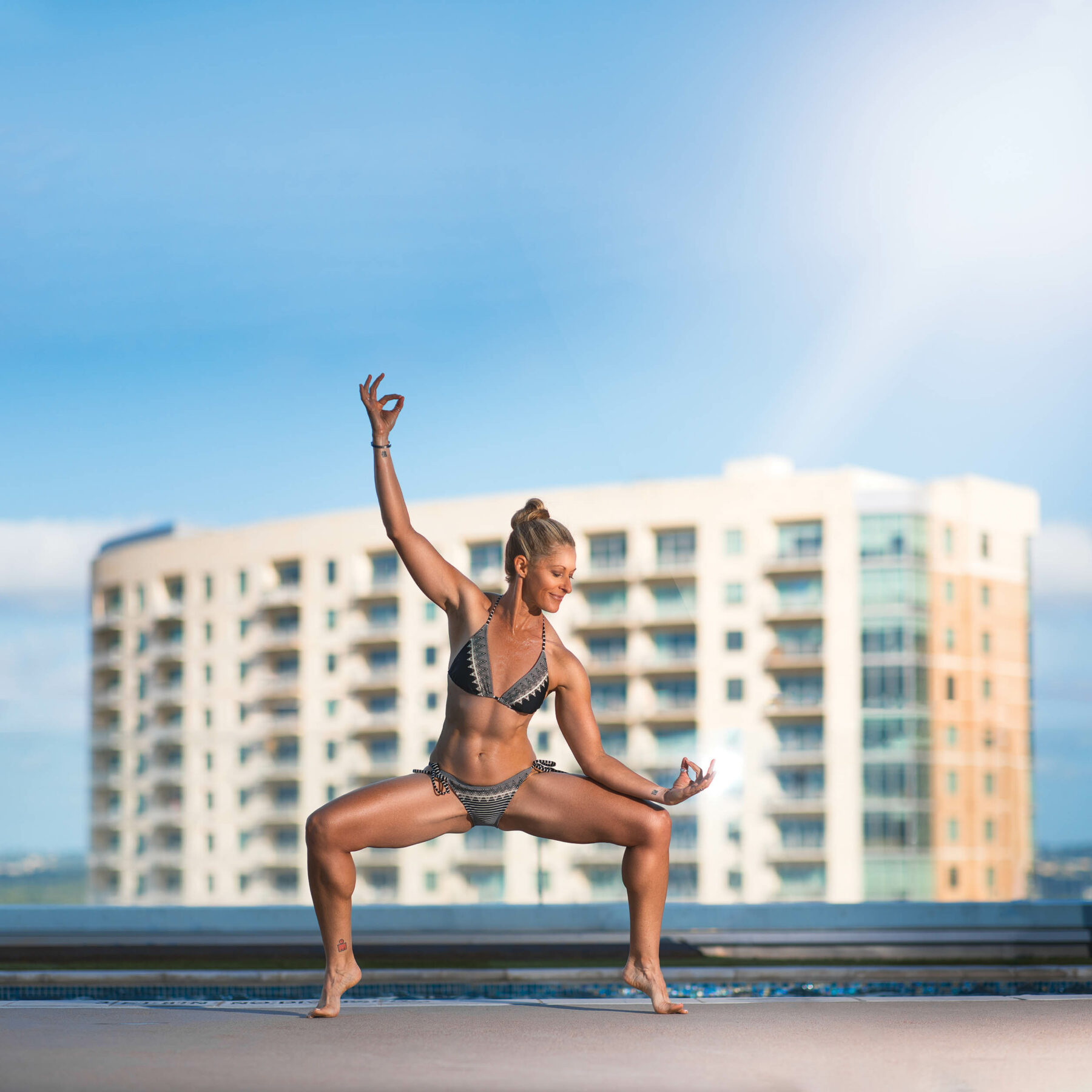
What feels almost as good as crossing the finish line? Having a great photo of yourself to document your accomplishment!
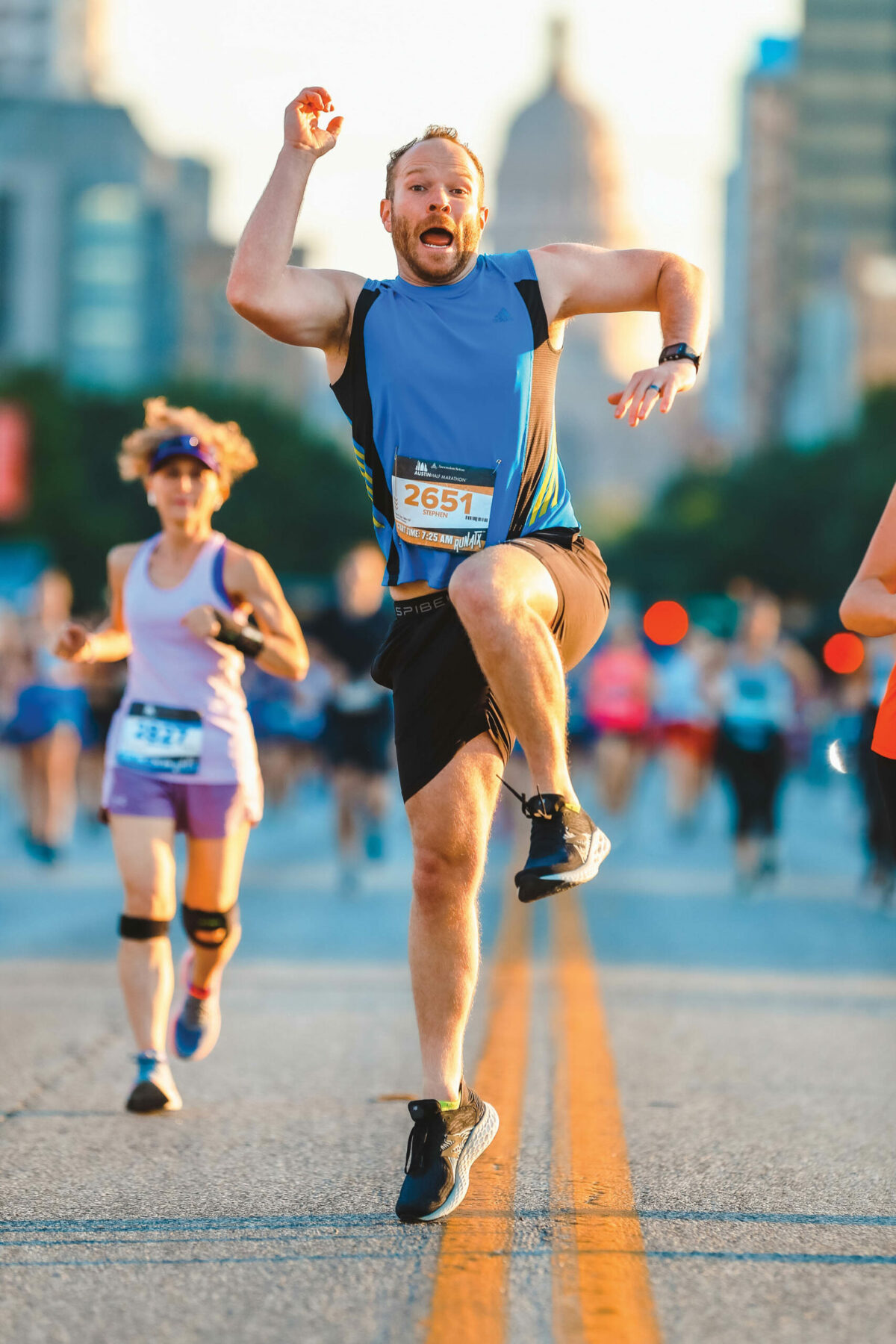
Scott Flathouse has become one of the most well-known sports photographers in the Austin area, so much so that athletes even look out for his “Flathouse Zone” where he’s capturing photos at an event.
Flathouse, who now lives in Houston, grew up in Austin as a student-athlete. After college, he picked up running again, doing triathlons and running the Cap10K a couple of times. Around 2011, he was injured, making him unable to race, but he decided to take up sports photography to continue participating. Eventually, local events started hiring him for photos.
I had the pleasure of sitting down with Flathouse to ask him about his photography strategy.
Kim Eagle: Do you look for moments to capture athletes’ bodies and their mental game?
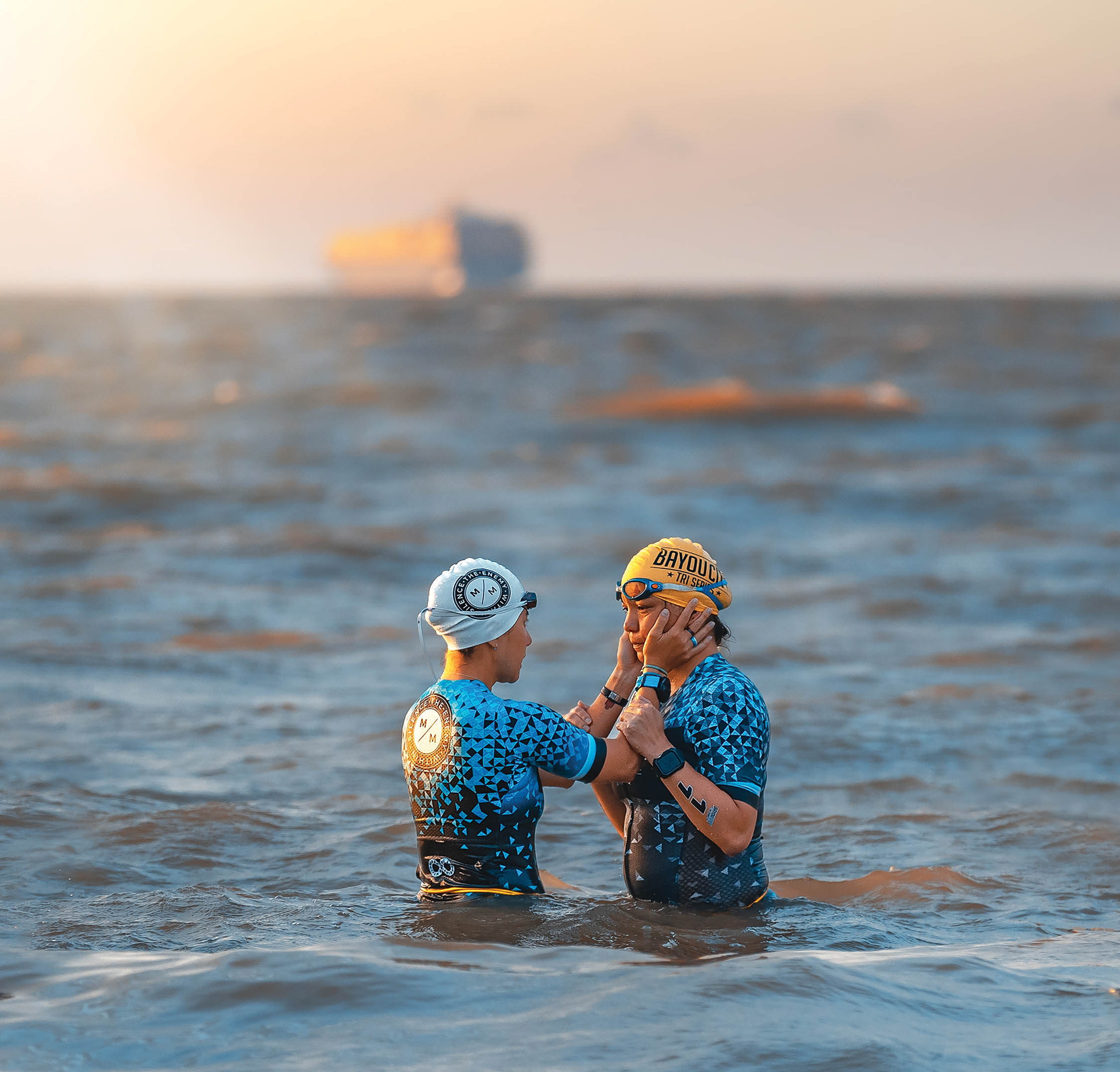
Scott Flathouse: I absolutely try to get photos that reflect the emotion, exertion, exhilaration or anything else that reflects the mental state. One of the most powerful photos I’ve taken was a moment prior to the swim start of the Sylvan Beach Triathlon. My friend Linda Fox was guiding a sight-and-hearing-impaired athlete, Leti Sandoval. There was high wind, and the water was choppy. Even experienced triathletes were anxious about the swim conditions. I saw a moment where Linda had her hands on Leti’s face, sharing some words of encouragement, and I snapped a few frames. After the race, I posted that shot to my Instagram and shortly afterward, Linda called and said a group was having lunch, looking at the photo and bawling. It’s rare that I can produce an image that evokes so much emotion, but it’s rewarding when it happens.
KE: Why is emotion important to capture in a photo of an athlete?
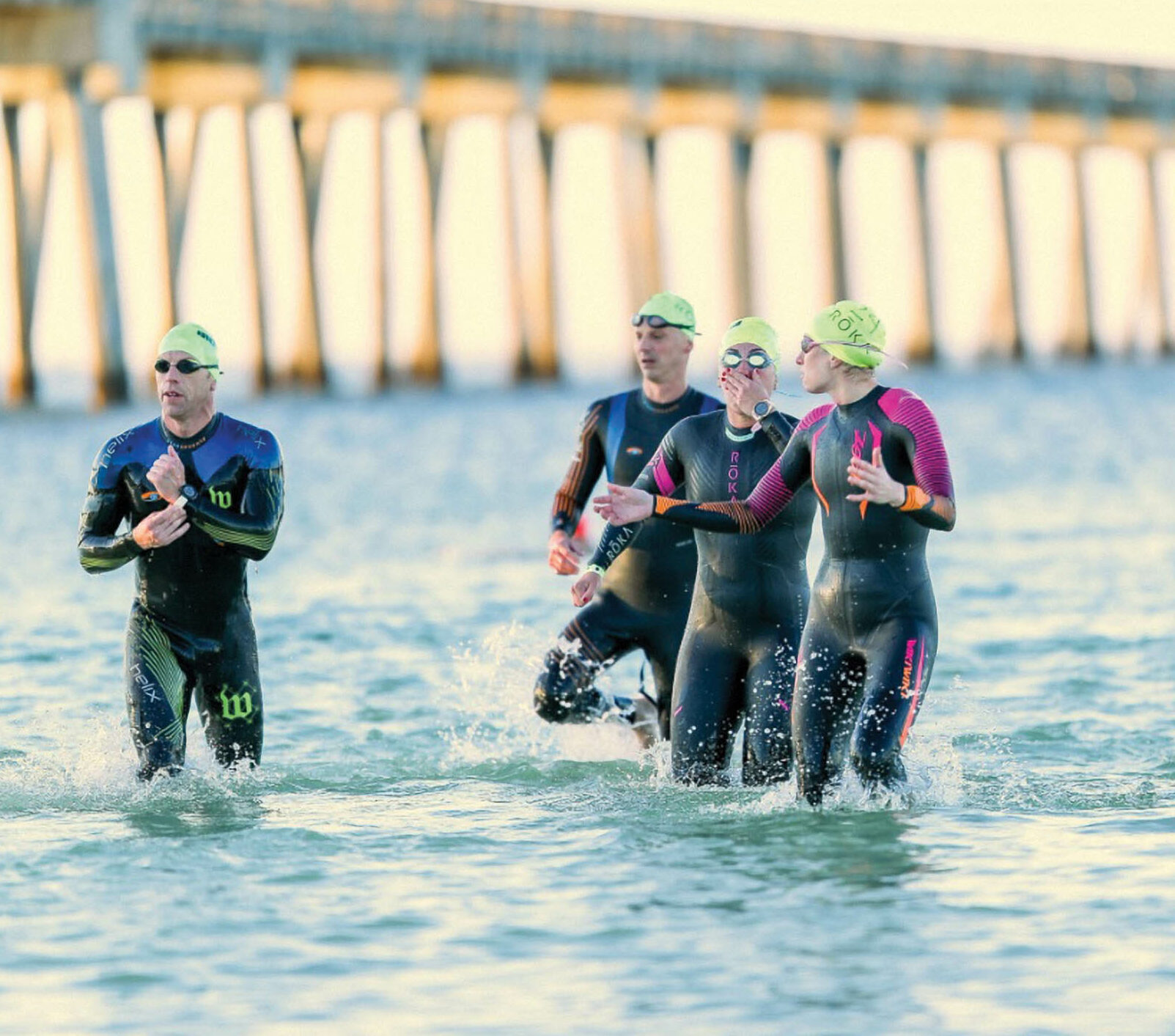
SF: Emotion is a key element of a truly great photograph. It’s difficult to capture that during a race and, of course, luck plays a big part. Another swim photograph comes to mind — the Ironman Florida swim course is two loops around the pier with the athletes exiting the water after the first loop and running a short way along the beach to re-enter for the second loop. Last year, there was a challenging riptide that made the return leg of the swim very difficult. I had set up on the beach to photograph athletes as they exited the water with the sun rising against the pier in the background. In one of the photographs, I captured professional triathletes Sarah Karpinski and Clarice Chastang where Sarah has turned back toward Clarice, throwing up her hands and saying, “WTF just happened?!” Clarice looked a bit shell-shocked as they recognized that they still had to do another lap.
KE: How do you capture the mind-body connection in a photo?
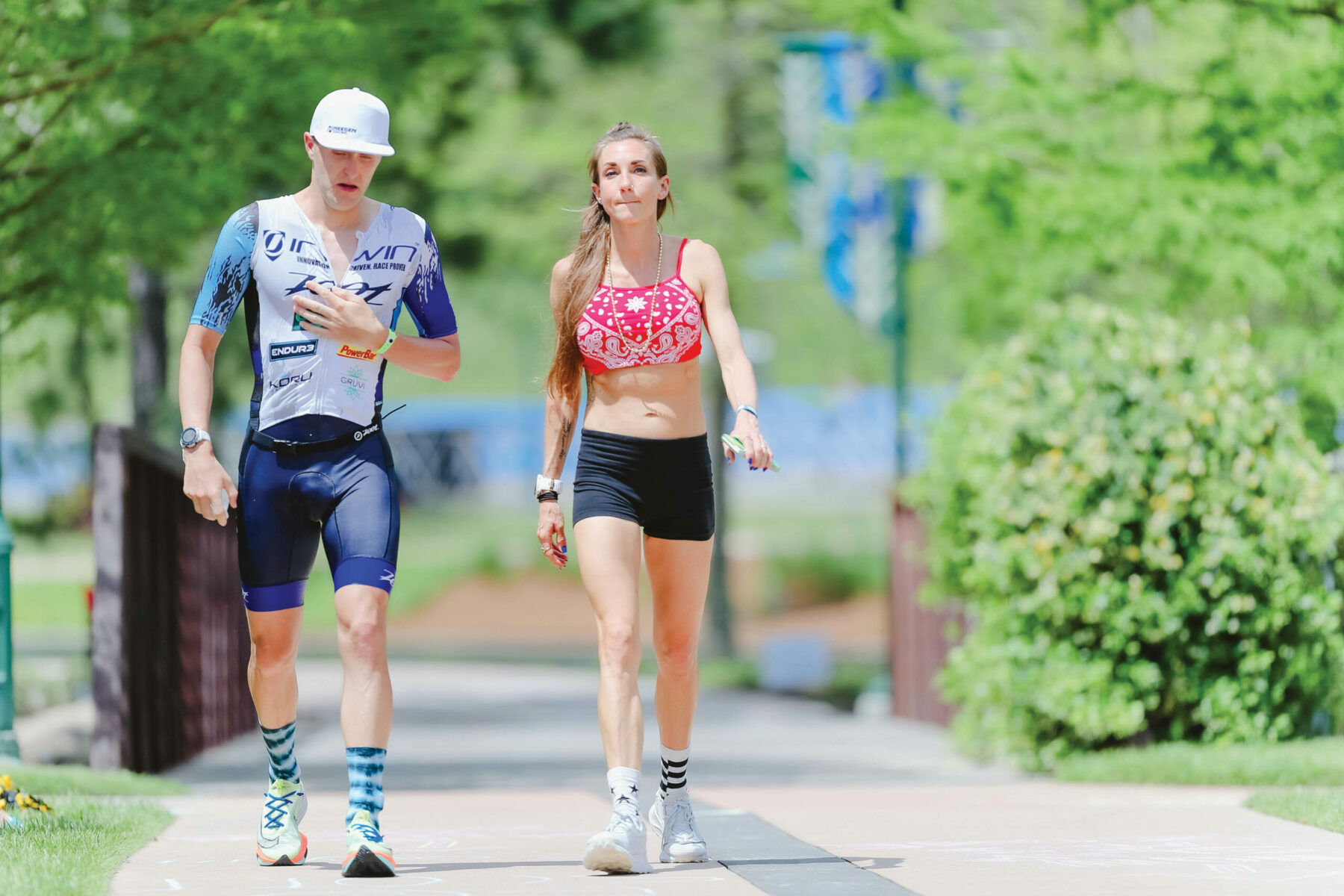
SF: One aspect of endurance sports that intrigues me is the point where your body wants to give up, but the mind pushes through. Sometimes the mind needs help: a flash of inspiration or some words of encouragement. I can see this mind-body connection in the face and, in particular, the eyes of an athlete when on the course. Last year at Ironman Texas, I was on the run course early when I saw pro triathlete Elliot Bach, and he was not having a good day. I found out later that he was prepared to take a DNF at that point, but his girlfriend Jenny Dupre caught up with him. I got a few frames of them walking and chatting. Jenny’s words were evidently enough to inspire Elliot to continue on to finish. It’s not a particularly exciting photograph, just two people walking, but the story is written on their faces.
KE: How can people find you on the course?
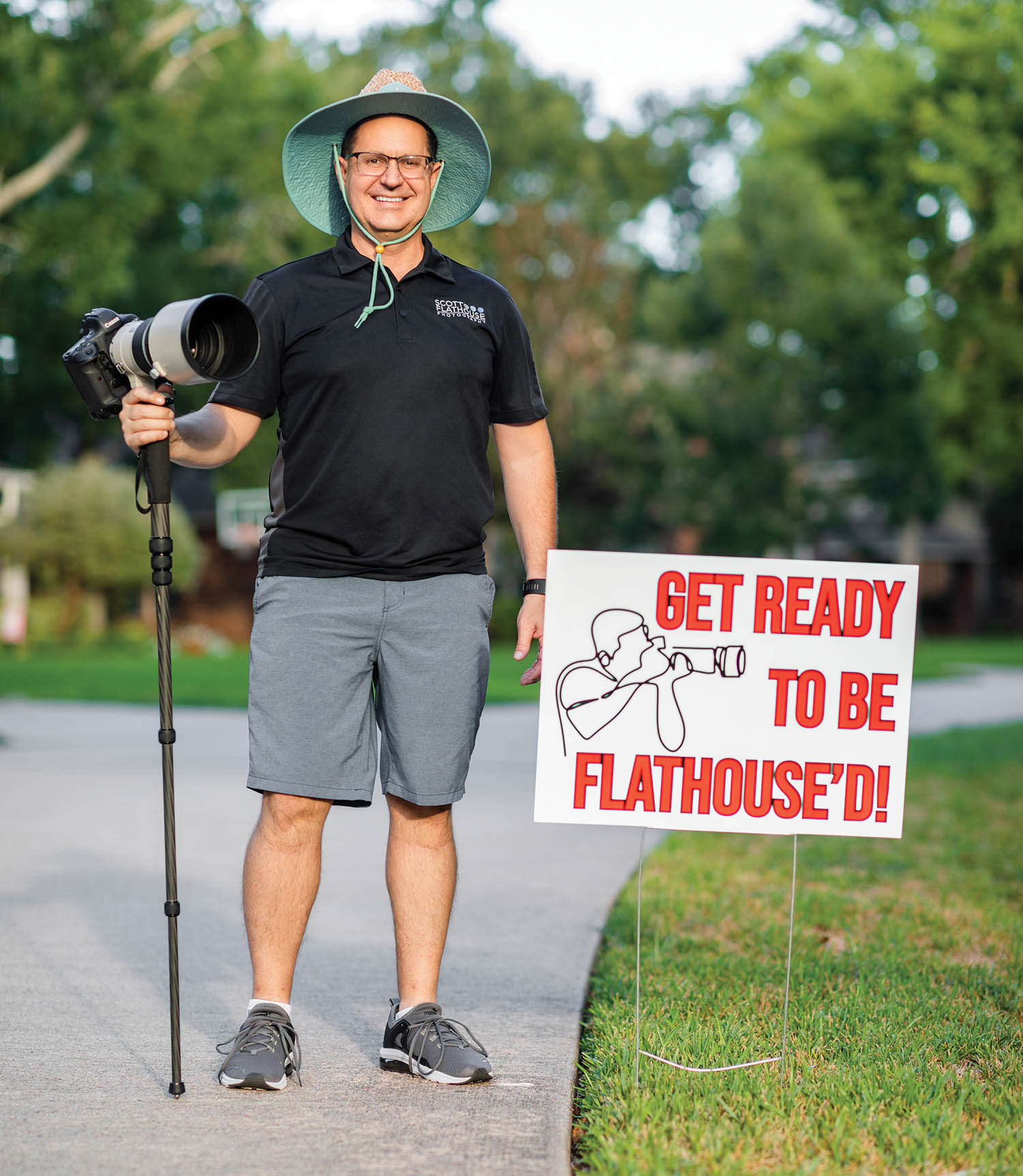
SF: When I first began photographing races, people would comment that they never saw me on the course. I began to wear goofy hats and, where possible, I would bring a portable speaker to blast music. I usually try to pick out a spot on the course that is away from most of the spectators. If I can provide a brief distraction from the suffering, I’m happy to help! Now, we even have signs on the course that say, “Get Flathoused” or “Flathouse Zone,” so athletes know I’m shooting ahead.
I do hope you all get Flathoused at your next race! And when you do, make sure you throw him a thumbs up, smile, shaka sign and even a thank you for all he is doing in the athletic community in capturing athletes’ minds and bodies.
About the Author
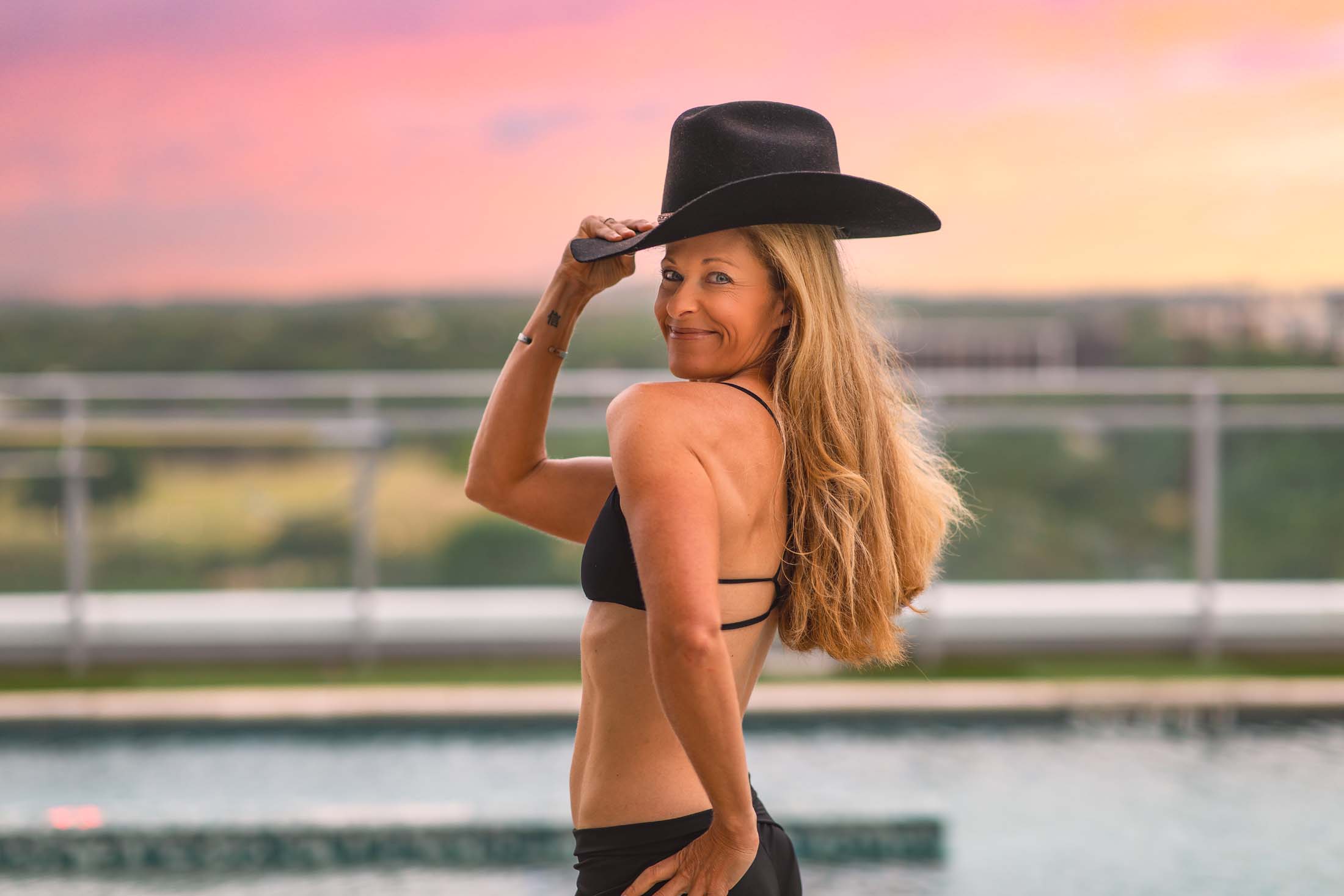
Kim Eagle is one of Austin’s award-winning personal trainers. She trains clients online for fitness and nutrition. Her passion is helping people get in their best shape at any age in a healthy, sustainable way. Her Earn ThatBody Podcast offers fitness, nutrition and health information you can put into play right away.






